 W
WAcronicta americana, the American dagger moth, is a moth of the family Noctuidae. It was originally described by Thaddeus William Harris in 1841 and is native to North America.
Alucita grammodactyla is a moth of the family Alucitidae. It is found in most of Europe, except Ireland, Great Britain, Portugal, Norway, Finland, Latvia, Lithuania, Ukraine, Slovenia and Greece. It is also present in Turkey. The habitat consists of moist rich fens, eu- and mesotrophic meadows, colline and montane hay meadows, acid grasslands and heaths at altitudes ranging from 90 to 900 meters.
Anacampsis scintillella is a moth of the family Gelechiidae. It is found in most of Europe, except Ireland, Great Britain, the Netherlands, Norway, Finland, most of the Baltic region and Poland.
 W
WApantesis phalerata, the harnessed tiger moth, is a species of moth of the family Erebidae. The species was first described by Thaddeus William Harris in 1841. It is found in North America from Ontario, Quebec and Maine to Florida, west to Texas, north to South Dakota.
 W
WChlenias banksiaria is a moth of the family Geometridae first described by Élie Jean François Le Guillou in 1841. It is found in the Australian Capital Territory, New South Wales, Victoria and Tasmania.
 W
WCrombrugghia tristis is a moth of the family Pterophoridae. It is found in most of Europe, except the Benelux, Great Britain, Ireland and Scandinavia. It is also known from southern Siberia, Asia Minor and central Asia. The habitat consists of sandy areas overgrown with Hieracium.
 W
WEpicopeia polydora is a moth of the family Epicopeiidae first described by Westwood in 1841. It is found in south-east Asia, including Assam in India, Vietnam and Thailand.
 W
WGastrinodes bitaeniaria is a moth of the family Geometridae. It is found in Queensland, New South Wales, South Australia, Victoria and Tasmania.
 W
WHellinsia osteodactyla is a moth of the family Pterophoridae. It is found in most of Europe, as well as North Africa and from Asia Minor to Japan. Also known as the small golden-rod plume it was first described by Philipp Christoph Zeller in 1841.
 W
WHemileuca hera, the sagebrush sheep moth or Hera buckmoth, is a moth of the family Saturniidae. The species was first described by Thaddeus William Harris in 1841. It is found in North America from southern Saskatchewan west to British Columbia, south to Arizona and New Mexico.
 W
WHeterocampa astarte, the astarte prominent moth, is a species of moth in the family Notodontidae. It was first described by Edward Doubleday in 1841 and it is found in North America.
 W
WHypena humuli, the hop looper or hop vine moth, is a moth of the family Erebidae. The species was first described by Thaddeus William Harris in 1841. It is found from coast to coast in Canada south in the east to Florida and Arkansas in the west to California. It is apparently absent from the south-central states. In Canada it is only absent from Newfoundland and Labrador, Prince Edward Island and the far north.
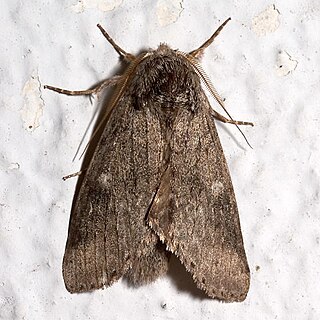 W
WLochmaeus manteo, the variable oakleaf caterpillar moth, is a moth of the family Notodontidae. It is found in eastern North America.
 W
WLophocampa caryae, the hickory tiger moth, hickory tussock moth, or hickory halisidota, is a moth in the family Erebidae and the tribe Arctiini, the tiger moths. The species is widely distributed in the eastern half of North America. In other species in this family, the caterpillars acquire chemical defenses from their host plants, so they are potentially toxic or unpalatable, but despite anecdotal claims that this species may also be venomous, no venom has yet been isolated or identified; adverse reactions are characterized as contact dermatitis.
 W
WLophocampa maculata, the spotted tussock moth, mottled tiger or spotted halisidota, is a moth of the family Erebidae and the tribe Arctiini, the tiger moths. The species was first described by Thaddeus William Harris in 1841. It is found across Canada, the western parts of the United States, south in the Appalachians to South Carolina and Kentucky.
 W
WMerrifieldia baliodactylus, also known as the dingy white plume, is a moth of the family Pterophoridae found in most of Europe. It was first described by the German entomologist, Philipp Christoph Zeller in 1841.
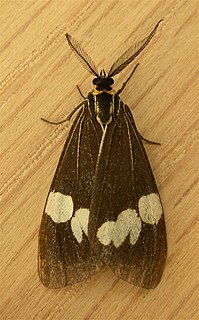 W
WNyctemera amicus, the senecio moth, magpie moth or cineraria moth, is a moth of the family Erebidae. The species was first described by Adam White in 1841. It is found in South-east Asia, Oceania, and most of Australia. It can also be found in New Zealand.
 W
WOxyptilus pilosellae is a moth of the family Pterophoridae first described by Philipp Christoph Zeller in 1841. It is found in most of Europe, east to Russia and Asia Minor. It was released as a biological control agent for Hieracium in New Zealand in 1998.
 W
WPhyllodesma americana, the American lappet moth, is a moth of the family Lasiocampidae. It is found from Nova Scotia to Georgia, west through Texas to California, north to British Columbia and Yukon.
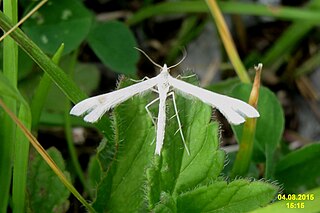 W
WPlatyptilia nemoralis is a moth of the family Pterophoridae. It is found from Europe, through Russia to Japan.
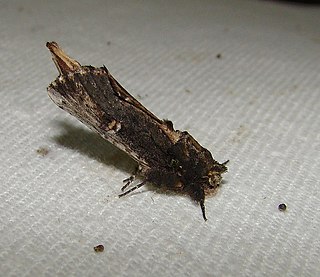 W
WSchizura ipomoeae, the morning-glory prominent moth or false unicorn caterpillar, is a moth of the family Notodontidae. The species was first described by Edward Doubleday in 1841. It is found in the United States and southern Canada.
 W
WScrobipalpa atriplicella, the goosefoot groundling moth, is a moth of the family Gelechiidae. It is found from most of Europe throughout Asia to Kamchatka and Japan. It is an introduced species in North America.
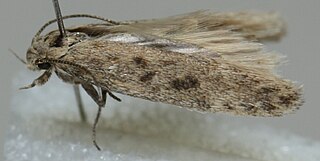 W
WScrobipalpa obsoletella, the summer groundling, is a moth of the family Gelechiidae. It is found in most of Europe, Turkey, the Caucasus, from Iran to Asian Russia (Transbaikal) and Mongolia. It has also been recorded from South Africa and North America, where it is probably an introduced species. The habitat consists of coastal salt marshes and sandy beaches.
 W
WSynemon sophia is a moth in the Castniidae family. It is found in Australia, including Western Australia, Victoria and South Australia.
 W
WSyssphinx bicolor, the honey locust moth, is a North American moth in the family Saturniidae.
 W
WTinagma balteolella is a moth in the Douglasiidae family. It is found in Great Britain, France, Belgium, the Netherlands, Germany, Switzerland, Austria, Italy, Spain, the Czech Republic, Slovakia, Croatia, Hungary, Romania, Poland, Lithuania and Ukraine. It is also found in Morocco and Jordan.
 W
WXyleutes persona is a moth of the family Cossidae. It is found in the Indian subregion, Sri Lanka, south-east Asia, Sundaland, Sulawesi, New Guinea and Queensland. The habitat consists of lowland forests.
 W
WThe zebra caterpillar is the larva of an American noctuid moth that feeds on cabbages, beets and other cultivated plants.